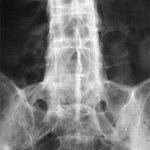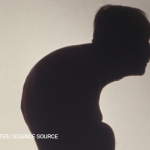Rat Model Research
In seeking to further understand how HLA-B27 shapes the gut microbiome, Dr. Rosenbaum et al. used rat models to investigate whether HLA-B27-mediated experimental spondyloarthritis is associated with a common gut microbial signature. The study team evaluated HLA-B27 transgenic Lewis and Fischer rats, both of which are known to develop gut inflammation, and Dark Agouti rats, which are resistant to the effects of HLA-B27-associated gut inflammation and spondyloarthritis.
Although the researchers had predicted that comparing gut microbiota in these three different rat strains, which vary in disease severity and penetrance, would show a common microbial signature associated with spondyloarthritis, what they found was HLA-B27-associated changes in the gut microbiome were quite different in the three strains of rats, and HLA-B27-induced microbial dysbiosis appears to be significantly affected by the genetic background of the host.8
The interaction between gut flora & the immune system may yield collateral damage & explain some of the genetic associations seen in spondyloarthritis.
It appears that reality is not as simple as HLA-B27 shaping the microbiome in a specific way to lead to the development of ankylosing spondylitis in a stereotyped pattern. The story is far more complicated.
Environmental Factors
This does not even begin to address the role environmental factors also play in molding the microbiome, Dr. Scher stated. Antibiotic exposure, effects of aging, diet, infections and surgeries that alter the intestinal anatomy are among the many elements that influence the diversity and composition of endogenous bacteria. Although it is not particularly surprising that antimicrobials may dictate changes in the microbiome, recent work has shown the disease-modifying anti-rheumatic drug methotrexate has off-target effects on the human gut microbiota. Methotrexate appears to induce shifts in the relative abundance of bacteria in such a way that the response to treatment and degree of inflammatory disease can be greatly influenced by these changes.9
Such findings raise the question if treatments targeted at inhibition of tumor necrosis factor alpha, IL-17A and IL-23, all of which are effective for the treatment of ankylosing spondylitis, also have off-target effects on the microbiome. If so, then understanding the clinical phenotype of a patient with ankylosing spondylitis may, in the future, prove to be only part of the way in which rheumatologists can subgroup populations of patients. As important may be understanding the unique microbiomes of patients and how these dynamic populations of bacteria affect the development of disease in the first place and, down the line, response or lack of response to treatment.


